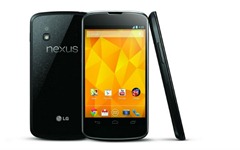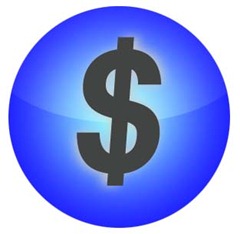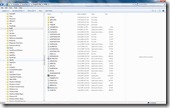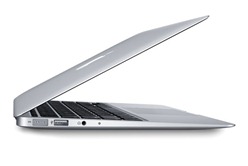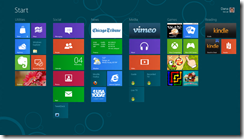Assigning a 3-Letter Code System for NCAA Sports Teams
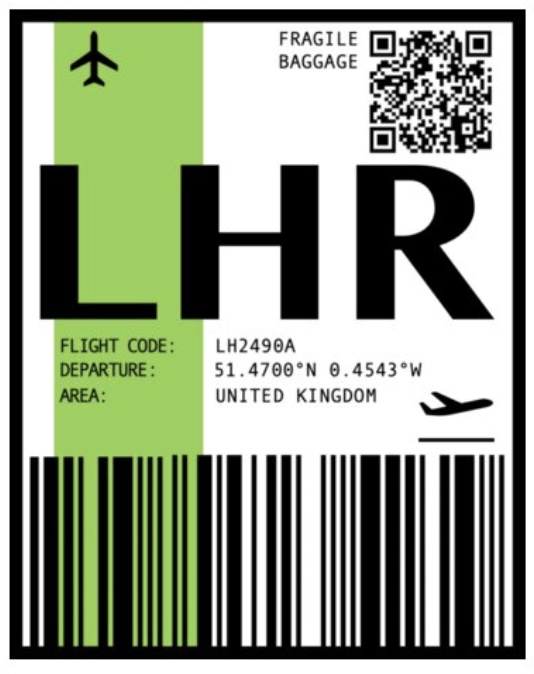
The NCAA has just over 350 Division I basketball schools. The popularity of these teams’ sports has spawned much media and internet focus, including pages about the schools, the sports programs, and references to these programs on sites for betting, statistics, and schedules. Unfortunately each site seems to have their own system of naming these teams, which makes it extremely difficult to compile information from multiple sources. For example some sites refer to “NC State” as “N.C. State”, while some refer to it as “N. Carolina St.”, and others list it as “NCSU.”
These schools belong to a governing body, the NCAA, which needs to send guidance to media outlets as to the official names of these programs. Each team needs to have a long name for uses such as those on scoreboards. Additionally each team needs to have either a standardized numeric or alphabet-based code system to help differentiate teams consistently.
In the 1960s the Pantone system of standardizing colors was created. Now over 2,000 colors have been indexed, and help web designers, printers, textile designers, and paint artists with a consistent system of colors. It is a numeric system, however, so there is no intuitive basis for understanding a referenced color based simply on the number. As well, assignments that use numbers imply a hierarchy that is at odds with the NCAA’s mission.
In the 1960s the IATA devised a system of 3-letter codes to identify airports. This system is used today, and offers a fairly intuitive hint to the user about the airport referenced. Because this system doesn’t have inherent bias, as a numeric one does, a 3-letter alphbet-based system is what the NCAA needs to implement in order to guide all markets referencing their members.
I created a system for 356 Division I teams based on a few simple rules:
- If the school name begins with a consonant, use the first 3 consanants in the name.
- If a name begins with a vowel, use that vowel and the next two consonants
- Schools that begin with a directional name (eg,”Northern”), begin with the directional consonant, then use the first two consonants in the school name body.
- Schools that end with “State”, always has “S” as their third code letter. The other two letters are either from a state’s postal code, or use a logical two letter code for the body of the school name.
- In the case of duplicates, the next logical consonant or vowel is used.
- Offensive 3-letter combinations should be avoided, and use logical alternate lettering.
- The letters “U”,”C”, and “I” are always avoided when representing the words “university,” “college,” and “institute.” This is contrary to historical standards at some schools, but a consistent standard for all teams, applied as equally as possible, is more important for intuition than classic naming.
The table below shows 356 unique names for Division I schools. If an NCAA representative wants to discuss this, please contact me as soon as possible.
| ABBV | |
| Alabama A&M | AAM |
| Abilene Christian | ABC |
| Auburn | ABR |
| UAB | ABM |
| Akron | AKR |
| Alabama | ALA |
| Albany | ALB |
| Alcorn | ALC |
| Alabama St. | ALS |
| American | AMR |
| Appalachian St. | APP |
| Air Force | ARF |
| Arkansas | ARK |
| Army | ARM |
| Ark.- Pine Bluff | ARP |
| Arizona St. | AZS |
| Arkansas St. | ARS |
| Arizona | ARZ |
| Austin Peay | ASP |
| Bucknell | BCK |
| Buffalo | BFF |
| Bellarmine | BLL |
| Ball St. | BLS |
| Belmont | BMT |
| Binghamton | BNG |
| Bradley | BRD |
| Brown | BRW |
| Bryant | BRN |
| BYU | BRY |
| Boston College | BSC |
| Boise St. | BSS |
| Boston U. | BST |
| Bethune – Cookman | BTC |
| Butler | BTL |
| Bowling Green | BWG |
| Baylor | BYL |
| Central Conn.St. | CCS |
| Charlotte | CHR |
| Charleston So. | CHS |
| Chicago St. | CGS |
| Chattanooga | CHT |
| UCLA | CLA |
| California Baptist | CLB |
| Col.of Charleston | CLC |
| UC Davis | CLD |
| California | CLF |
| Colgate | CLG |
| UC Irvine | CLI |
| Clemson | CLM |
| Columbia | CLU |
| Cal Poly | CLP |
| Colorado | CLR |
| UC Riverside | CRV |
| Colorado St. | CLS |
| Cleveland St. | CLV |
| Campbell | CMP |
| Cincinnati | CNC |
| UCF | CNF |
| Central Mich. | CNM |
| UConn | CNN |
| Central Arkansas | CNR |
| Canisius | CNS |
| Coppin St. | CPS |
| Creighton | CRG |
| Cornell | CRN |
| CSU Bakersfield | CBK |
| UC Santa Barbara | CSB |
| Coastal Carolina | CSC |
| UC San Diego | CSD |
| Cal St.Fullerton | CSF |
| CSU Northridge | CSN |
| The Citadel | CTD |
| Delaware St. | DLS |
| Delaware | DLW |
| Denver | DNV |
| DePaul | DPL |
| Duquesne | DQS |
| Drake | DRK |
| Dartmouth | DRT |
| Drexel | DRX |
| Detroit Mercy | DTM |
| Duke | DUK |
| Davidson | DVD |
| Dayton | DYT |
| East Carolina | ECR |
| Eastern Ill. | EIL |
| Eastern Ky. | EKN |
| Elon | ELN |
| Eastern Mich. | EMC |
| East Tennessee St. | ETS |
| Evansville | EVN |
| E.Washington | EWS |
| Florida A & amp; M | FAM |
| Florida Gulf Coast | FGC |
| Fla.Atlantic | FLA |
| Florida International | FLI |
| Florida | FLR |
| Florida St. | FLS |
| Fairleigh Dickinson | FRL |
| Fordham | FRD |
| Fairfield | FRF |
| Furman | FRM |
| Fresno St. | FRS |
| Gonzaga | GNZ |
| Green Bay | GRB |
| Grand Canyon | GRC |
| Georgetown | GTN |
| Georgia | GRG |
| George Mason | GGM |
| Grambling | GRM |
| Georgia St. | GRS |
| Georgia Tech | GRT |
| Gardner – Webb | GDW |
| George Washington | GRW |
| Georgia Southern | GST |
| Hawaii | HAW |
| Hofstra | HFS |
| High Point | HGP |
| Holy Cross | HLC |
| Hampton | HMP |
| Harvard | HRV |
| Houston Christian | HSC |
| Houston | HST |
| Howard | HWR |
| Idaho St. | IDS |
| Illinois – Chicago | ILC |
| Illinois | ILL |
| Illinois St. | ILS |
| Indiana | IND |
| Indiana St. | INS |
| UIW | INW |
| Iona | ION |
| Iowa | IOW |
| Idaho | ISH |
| IUPUI | IUP |
| Iowa St. | IWS |
| Jacksonville | JAC |
| Jackson St. | JCS |
| James Madison | JMM |
| Jacksonville St. | JVS |
| Kansas | KAN |
| Kentucky | KEN |
| Kansas City | KNC |
| Kennesaw St. | KNN |
| Kansas St. | KNS |
| Kent St. | KNT |
| Lafayette | LAF |
| La.Lafayette | LAL |
| Lamar University | LAM |
| La Salle | LAS |
| Long Beach St. | LBS |
| Lehigh | LEH |
| Liberty | LIB |
| Loyola Maryland | LMD |
| Longwood | LNG |
| Long Island | LNI |
| Lipscomb | LPS |
| UL Monroe | LSM |
| LSU | LSS |
| Louisiana Tech | LST |
| Louisville | LSV |
| Little Rock | LTR |
| Loyola Chicago | LYC |
| Loyola Marymount | LYM |
| Maine | MAN |
| UMBC | MBC |
| Michigan | MCH |
| McNeese | MCN |
| Michigan St. | MCS |
| UMES | MES |
| Missouri | MIS |
| Milwaukee | MLW |
| Miami | MMF |
| Miami(OH) | MMO |
| Memphis | MMP |
| Manhattan | MNH |
| Monmouth | MNM |
| Minnesota | MNN |
| Montana St. | MNS |
| Montana | MNT |
| Missouri St. | MOS |
| Mercer | MRC |
| Morgan St. | MRG |
| Marquette | MRQ |
| Merrimack | MRR |
| Murray St. | MRS |
| Marshall | MRH |
| Marist | MRT |
| Maryland | MRY |
| UMass Lowell | MSL |
| Mount St.Mary 's | MSM |
| Massachusetts | MAS |
| Mississippi St. | MSS |
| Middle Tennessee St. | MTS |
| Mississippi Val. | MVS |
| Northern Alabama | NAL |
| Northern Ariz. | NAR |
| Navy | NAV |
| Nebraska | NBR |
| N.C.A & amp; T | NAT |
| UNC Asheville | NCA |
| N.C.Central | NCC |
| UNC Greensboro | NCG |
| Nicholls | NCH |
| Northern Colorado | NCO |
| NC State | NCS |
| UNCW | NCW |
| North Dakota St. | NDS |
| Niagara | NGR |
| Northern Iowa | NIA |
| Northern Illinois | NIL |
| NJIT | NJT |
| Northern Kentucky | NKY |
| UNLV | NLV |
| New Mexico St. | NMS |
| New Mexico | NMX |
| New Orleans | NOW |
| North Carolina | NRC |
| North Dakota | NRD |
| Northeastern | NRE |
| Norfolk St. | NRS |
| North Florida | NRF |
| Morehead St. | NRH |
| North Texas | NRT |
| Northwestern | NRW |
| Notre Dame | NTD |
| Nevada | NVD |
| New Hampshire | NWH |
| Northwestern St. | NWS |
| Ohio | OHI |
| Ohio St. | OHS |
| Oakland | OKD |
| Oklahoma | OKL |
| Oklahoma St. | OKS |
| Old Dominion | OLD |
| Ole Miss | OLM |
| Omaha | OMH |
| Oregon | ORG |
| Oral Roberts | ORR |
| Oregon St. | ORS |
| Pacific | PCF |
| Purdue Fort Wayne | PFW |
| Penn | PNN |
| Penn St. | PNS |
| Pepperdine | PPP |
| Purdue | PRD |
| Princeton | PRN |
| Portland St. | PRS |
| Presbyterian | PRB |
| Portland | PRT |
| Prairie View | PRA |
| Providence | PRV |
| Pittsburgh | PTT |
| Quinnipiac | QNN |
| Robert Morris | RBM |
| Richmond | RCH |
| Radford | RDF |
| Rider | RDR |
| Rhode Island | RHI |
| Rice | RIC |
| Rutgers | RTG |
| South Alabama | SAL |
| Sacred Heart | SCH |
| Southern California | SCL |
| South Carolina | SCR |
| Sacramento St. | SRS |
| South Carolina St. | SCS |
| SC Upstate | SCU |
| South Dakota | SDK |
| San Diego St. | SNS |
| South Dakota St. | SDS |
| Stephen F. Austin | SFA |
| South Fla. | SFL |
| St. Francis (PA) | SFP |
| SIU Edwardsville | SIE |
| Southern Ill. | SIL |
| San Jose St. | SJS |
| Southeastern La. | SLS |
| Samford | SMF |
| Sam Houston | SMH |
| Southern Miss | SMO |
| SE Missouri St. | SMS |
| Siena | SNA |
| St. Bonaventure | SNB |
| Santa Clara | SNC |
| San Diego | SND |
| San Francisco | SNF |
| Saint Joseph's | SNJ |
| Saint Louis | SNL |
| Saint Mary's | SNM |
| Saint Peter's | SNP |
| Stony Brook | STB |
| Seton Hall | STH |
| Southern U. | STR |
| St. John's | STJ |
| SMU | STM |
| Stanford | STN |
| Seattle | SEA |
| Stetson | STT |
| Southern Utah | SUT |
| Syracuse | SYR |
| A&M – Corpus Christi | TAC |
| Texas A&M | TAM |
| Toledo | TLD |
| Tulane | TLN |
| Tulsa | TLS |
| Temple | TMP |
| Tenn-Martin | TNM |
| Tennessee | TNN |
| Tennessee St. | TNS |
| Tennessee Tech | TNT |
| Texas Rio Grande Valley | TRG |
| Tarleton State | TRS |
| Troy | TRY |
| Texas-San Antonio | TSA |
| Texas St. | TSS |
| Texas Southern | TST |
| Towson | TWS |
| Texas-Arlington | TXA |
| TCU | TXC |
| Texas | TXS |
| Texas Tech | TXT |
| Utah | UTH |
| UTEP | UTP |
| Utah St. | UTS |
| Utah Tech | UTT |
| Utah Valley | UTV |
| Villanova | VLL |
| Valparaiso | VLP |
| Vanderbilt | VND |
| VCU | VRC |
| Virginia | VRG |
| Vermont | VRM |
| VMI | VGM |
| Virginia Tech | VRT |
| Weber St. | WBS |
| Western Carolina | WCR |
| Wichita St. | WCS |
| Wofford | WFF |
| Wagner | WGN |
| Western Ill. | WIL |
| Wake Forest | WKF |
| Western Ky. | WKY |
| William & Mary | WLM |
| Western Michigan | WMI |
| Winthrop | WNT |
| Wright St. | WRS |
| Wisconsin | WSC |
| Washington | WSH |
| Washington St. | WSS |
| West Virginia | WSV |
| Wyoming | WYM |
| Xavier | XVR |
| Yale | YAL |
| Youngstown St. | YNS |





